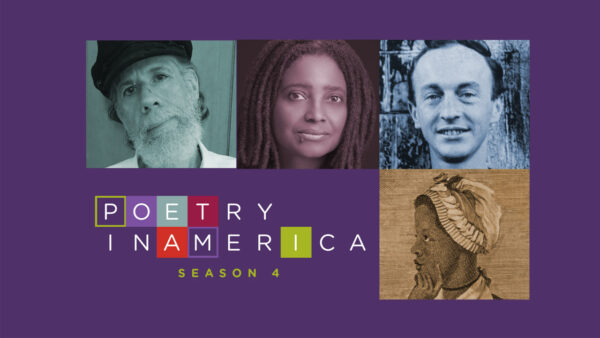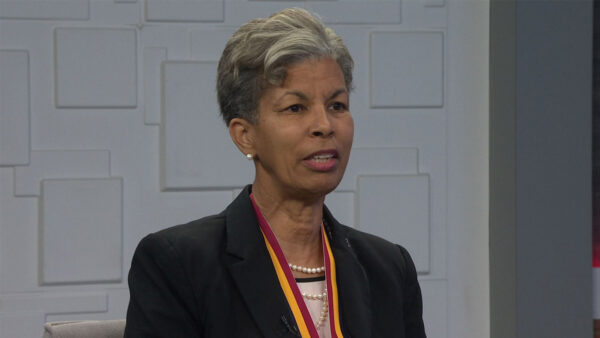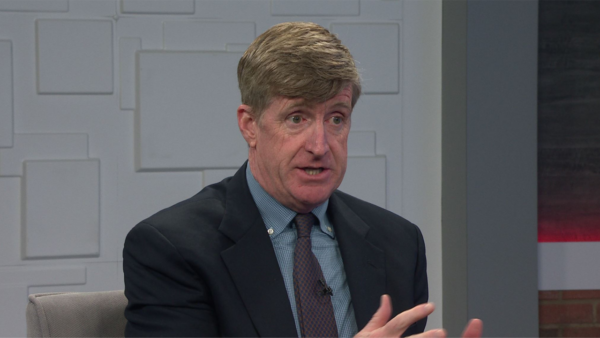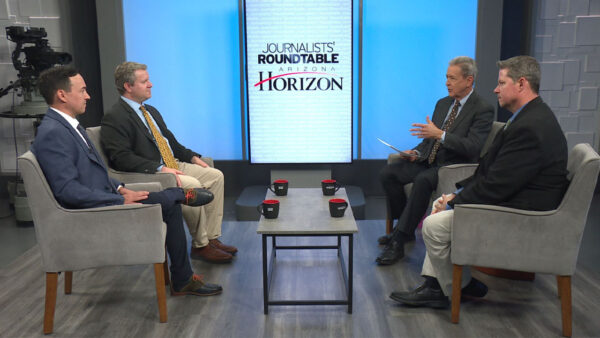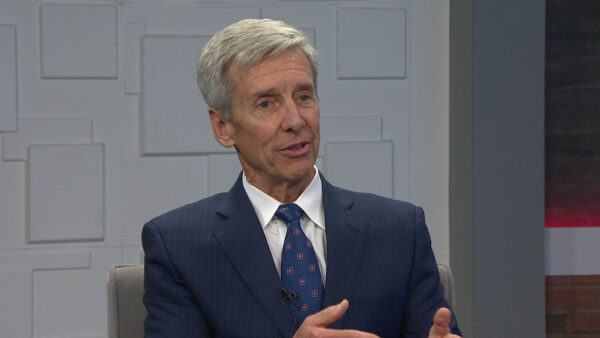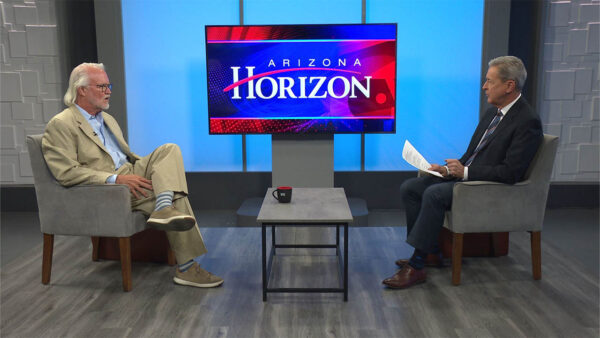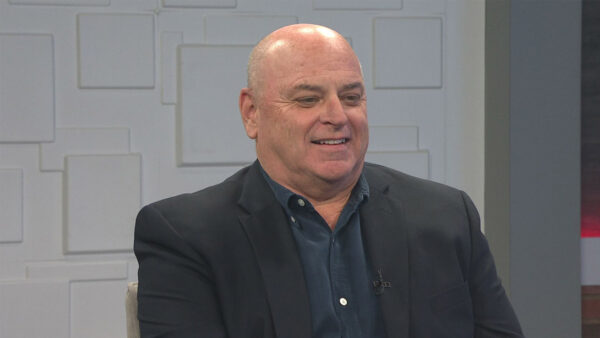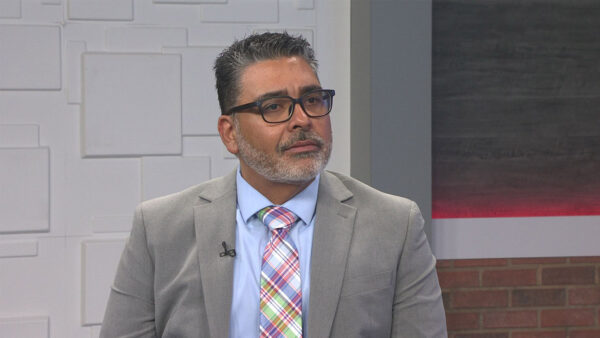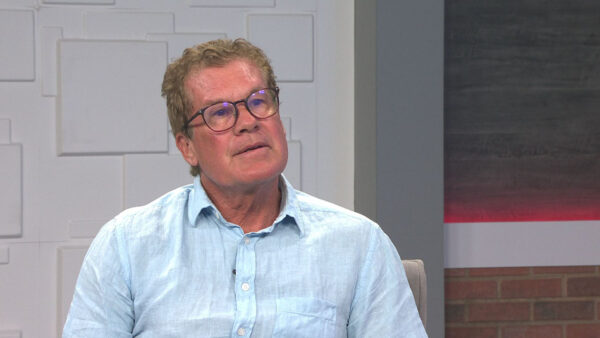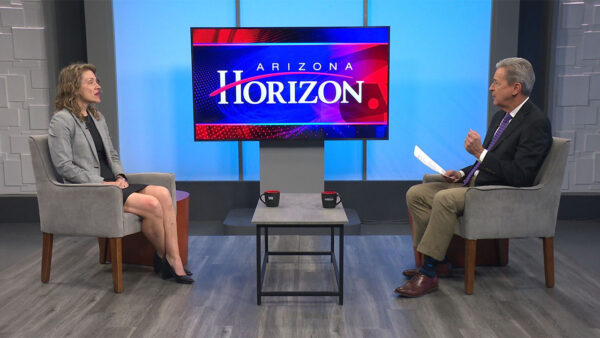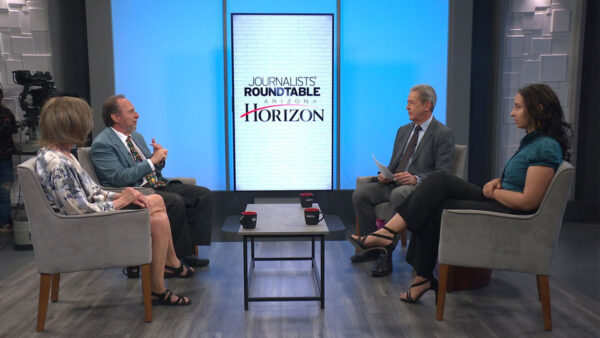We’ll take a look at the Valley’s Discovery Triangle. It’s a regional cooperative effort to enhance, develop and revitalize property within the geographic triangle that connects downtown Phoenix, Tempe and Papago Park.
Ted Simons: The area between Phoenix, Tempe and Papago Park was recently labeled the discovery triangle. It's a part of the valley that's been neglected over the years as development shifted to the suburbs. But in 2008, the Discovery Triangle Development Corporation was created to reinvigorate the area. More on that in a moment, but first, David Majure and Scott Olson take us to the discovery triangle.
Narrator: 16,000 acres, 25 square miles between Phoenix, Tempe and Papago Park. This is the Discovery Triangle. Parts of the triangle are vibrant, economic powerhouses.
Charle Meyer: Already in Tempe, 20% of the jobs that we have right in this area are technology-related jobs. They are the jobs that represent the future.
David Krietor: You've got sky harbor airport with 40,000 people going to work there every day. You've got these incredibly extraordinary things that are now happening in downtown Phoenix. With the ASU campus, with the bioscience campus.
Narrator: But much of the region has seen better days.
Charlie Meyer: Time hasn't treated it very kindly.
Narrator: The Discovery Triangle Development Corporation is a public-private partnership created in 2008 to help the triangle reach its maximum potential. It's making plans to redevelop and revitalize the region shaping it in to a world class urban core.
David Krietor: The aspiration, that we've had of having an urban core that can compete with the greatest urban cores of the United States, this is an opportunity for us to do that.
Charle Meyer: It's about collaboration to a large extent.
David Krietor: Especially with the advent of light rail, which I think is just critical in providing the golden thread that ties these three employment centers together.
Mindy Korth: The points of the triangle are downtown Phoenix, downtown Tempe and Papago Park.
Narrator: In partnership with real estate firm CB Richard Ellis, the Discovery Triangle Corporation has developed a Google Earth-based asset inventory.
Mindy Korth: The assets would include the freeway system, being immediately adjacent to the international airport, having Papago Park.
Narrator: It consists of levels and levels of data.
Mindy Korth: Now as an example if we happen to be looking at a site in downtown Tempe, Hayden Ferry lake side is an example. We can zero in even closer.
Narrator: It's information to help market the area and plan for its redevelopment.
Mindy Korth: It's a combination of not only all of the non-single family land area and what the usage is of that area, but also the schools, the hospitals, the road systems, the cultural amenities. The museums et cetera.
Narrator: The asset inventory can show businesses looking to expand or relocate to the region, just about everything it has to offer.
David Krietor: Right now, today, we have tremendous concentrations of employment and vitality in downtown Tempe, at sky harbor airport and downtown Phoenix. This is an opportunity to tie those three economic engines that really drive a lot of economic activity in the region together and to market and sell and promote the -- them as one entity. I think that folks are going to find this very beneficial in the long term.
Narrator: Phoenix, Tempe and other members of the public-private partnership are trying to -- shape the valley's future, if they succeed it will be in the shape of a triangle.
Ted Simons: Joining me are members of the board for the discovery triangle development corporation, Sara Dial, former director of the state department of commerce And Chairman of the Board, Marty Shultz. He's also the vice president of government affairs for Pinnacle West Capital Corporation. good to see you. What can this do to push development in this area?
Sara Dial: Well, you know, you think about the greater Phoenix area 25 years ago, what all the things that weren't here. We didn't have chase field, didn't have the highway 202, the 101, Tempe Town Lake. All of these things that happened in 25 years. Imagine what can happen in discovery triangle in the next 25 years. Our effort about regional collaboration, we are trying to be a catalyst to getting the cities to work together, which they have been doing beautifully. About revitalizing that area between these two urban cores, David talked about with Papago Park. A tremendous opportunity, it takes great vision. That's what we're about.
Ted Simons: How does it impact Tempe and Phoenix? Directly, what can the cities say, look, this is going to help us?
Marty Shultz: Well, I think that in this day and age when there's a lot of complaining about the economy, because it is down and we're concerned about jobs, specific impact and outcomes of the discovery triangle and the development corporation that is working on its behalf is for new jobs, which mean new investments, that of course would mean new industries. And the kind of industries that we're talking about are really urban, vital, knowledge-based kinds of industries. The opportunities that Phoenix and Tempe and this whole area have adjacent to and surrounded by, if you will, great transportation systems including an airport that goes anywhere in the world and great universities, will result in promoting the knowledge economy generally and the biosciences, medical issues, device manufacturing, it goes on and on, Ted. The opportunities -- Sara talks about in the next 25 years I believe she's absolutely right. But if we were to break that up in to increments of four or five years we're going to see a pretty tremendous progress in this area in a lot shorter period of time. In terms of investments.
Ted Simons: I own a business in that area, I'm hearing this, "What is going on here? What's happening? What's in it for me?"
Sara Dial: One of the biggest benefits is that now we look at marketing our urban areas as a region. Downtown Phoenix by itself is a good story by itself. Downtown Tempe and the assets is a good story. Papago Park, but now we start looking at like it is a region, we really have something very, very powerful including the airport in the center of that with light rail connecting it and the many transportation assets that we have. So if we look at it as a region we have a much better story to tell, which is going to help us with development, hopefully in the not too distant future well see increase in real estate values, new jobs and many, many benefits to current businesses and new businesses and residents.
Ted Simons: Papago Park is included, I can see someone right now saying, they're not going to develop Papago Park, are they? Why is Papago Park included in it?
Sara Dial: Papago Park is a real asset. They just finished a master plan, the group is set with their plan. But what we found in our work and talking to a lot of leaders we reached out to hundreds of them. What is really unique about this area is there's this nature component to our urban core, that's what makes Arizona unique, we've got this desert sitting right smack in the middle of these two urban scores we tie it together that makes something very powerful. And Marty mentioned the knowledge company, the knowledge workers, those types of people that we want living and working and playing in the discovery triangle. What a wonderful lifetime amenity that is right there on the edge of our downtown.
Ted Simons: So you're not paving over paradise out there.
Sara Dial: Absolutely not.
Ted Simons: As far as cities contributing, what do they contribute? What did they get back? I mention this because the mayor of Scottsdale -- I guess Scottsdale decided not to go along with this particular project. But he said, we would be recipient of a little and payer of a lot. Talk to us about that quote and Phoenix and Tempe, what do they get and what do they pay?
Marty Shultz: Well, the synergies that are going on here, which means the fact is, that you've got powerful forces like the City of Phoenix and the City of Tempe working together in the urban area, Sara was talking about, which by the way that is this great nature oriented facility is wonderful. Scottsdale at this time, I really have to emphasize I think at this time, is somewhat divided politically in many different areas. And so I think the mayor and couple of his colleagues decided not to participate on a 3-3 vote, by the way. So, I think that in the end as the regional proposition that we put forward comes to life, Scottsdale will be much more interested because frankly, the residents of Scottsdale and residents of south Scottsdale are great beneficiaries as well. Nobody draws a line and says, they can't participate. But the city government chose not to participate and in the future I'm going to predict that they will.
Ted Simons: But in terms of -- I don't want to speak for the mayor he says, we're paying and not receiving. What does that mean as far as this particular project is concerned? What are cities, quote, unquote, paying for this?
Marty Shultz: The cities are paying several thousand dollars. It's really a rather inexpensive effort just to keep our small staff going so we can keep the corporation going and do the kinds of marketing analysis that you've heard about. So in terms of the dollar investment it is not significant and Mayor Lane knows that. They also contribute their talent and their vision as well. I just think this is one of those things, I've been involved before as you know, Ted, in regional developments. When we started talking about a freeway system years ago, I had cities that told me, Marty, we don't want to participate and Indians tribes didn't want to participate for various reasons. It's a change. But the regional cooperation is an imperative here. The regional cooperation is the key to this investment. Interestingly enough, regional cooperation was key to the freeway system, it is key to the airport, it is key to -- I could go on and on. This community of ours generally did not grow up because Phoenix did okay. Or Tempe did okay. Or Scottsdale did okay. We did it because of regional cooperation and frankly that's the beauty of this involvement we call it, regional or urban vitality and in nature. That's the reason that this is going to be successful.
Ted Simons: Sara, tangible results, things that weep can point to and see and say, discovery triangle, when can we see this?
Sara Dial: Immediately we've done the asset inventory which is huge investment by CBRE. I credit them for a ton of work and time and energy and research that have been spent. You asked the cities are getting, we're meeting with the city of Phoenix probably 25 of their employees on Monday to train them and show them the inventory and hopefully they will be using that in their day-to-day work and economic development. Same with the City of Tempe that's a huge asset to the cities that they will be receiving. Additionally Mayor Gordon is off to Singapore, I think he announced this week, we supplied him with collateral pieces to talk globally about the triangle, that's our hope. In ten or 15 years we'll be known globally for this triangle.
Ted Simons: My last question, only got 30 seconds or so less. In ten or 15 years, what do you own vision, what do you want to see? I.
Sara Dial: I see new companies, knowledge companies, our ASU and U of A graduates staying in the greater Phoenix area because of the discovery triangle, a place this they want to live and work and raise families. I see transportation, I see connectivity. Jobs, invest; all those things that we talked about.
Ted Simons: Very good. Thank you very much. We appreciate it.
Marty Shultz: Thank you.
Sara Dial:Board Member, Discovery Triangle Development Corporation;Mary Shultz:Chairman of the Board, Discovery Triangle Development Corporation;


